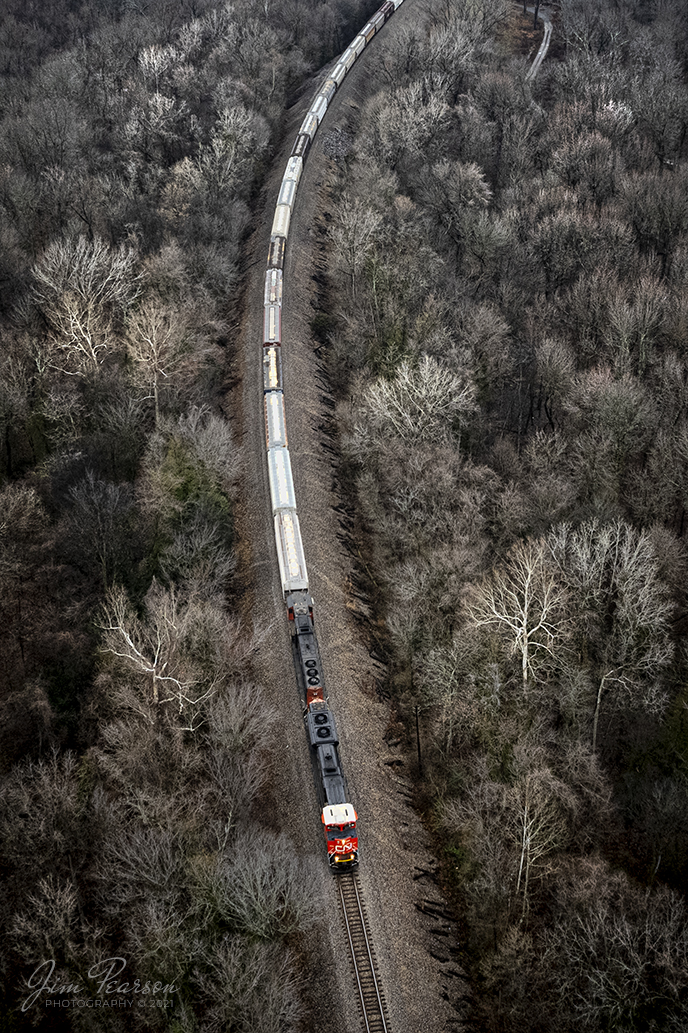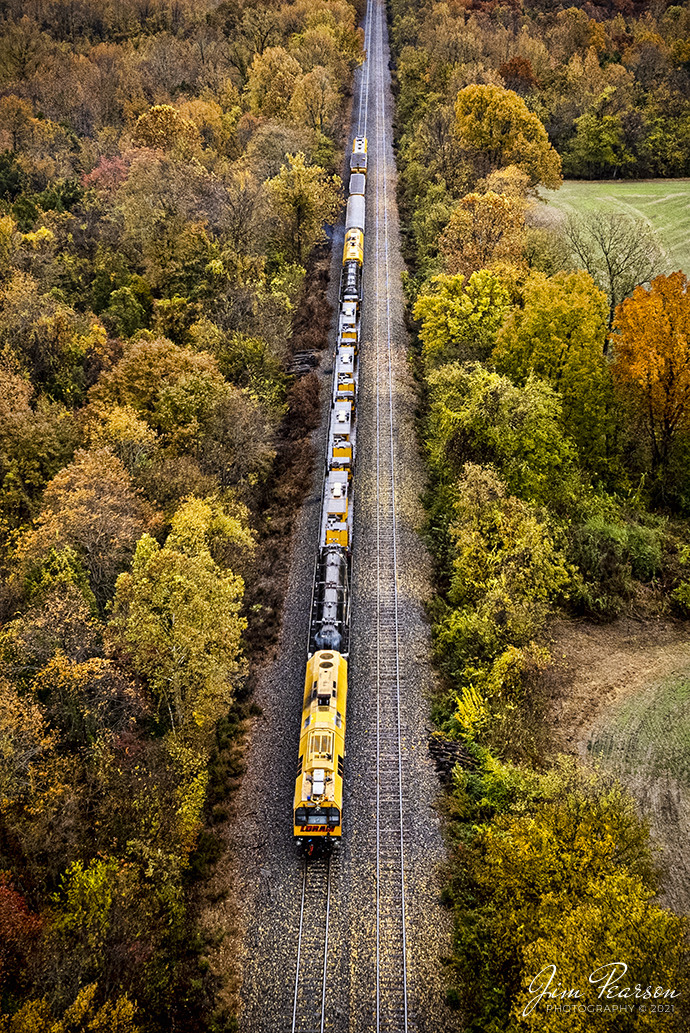December 29, 2021 – CN A431 heads north on the CN Centralia Subdivision just north of Cairo, Illinois
Canadian National 8892 and 5725 lead a southbound grain train at West Paducah, KY
Canadian National 8892 and 5725 lead a grain train southbound on the CN Bluford Subdivision, through the bare forest, after coming across the Metropolis, Illinois Bridge over the Ohio River on December 29th, 2021 at West Paducah, Kentucky.
Tech Info: DJI Mavic Air 2S Drone, RAW, 22mm, f/2.8, 1/160, ISO 140.
LORAM Railgrinder 401 sits south of Princeton, Kentucky on the Paducah and Louisville Railway
LORAM Railgrinder 401 sits south of Princeton, Kentucky on the Paducah and Louisville Railway on a beautiful fall afternoon on November 11th, 2021.
According to Wikipedia: A railgrinder (or rail grinder) is a maintenance of way vehicle or train used to restore the profile and remove irregularities from worn tracks to extend its life and to improve the ride of trains using the track. Rail grinders were developed to increase the lifespan of the tracks being serviced for rail corrugation. Rail grinding is a process that is done to stop the deformation due to use and friction on railroad tracks by removing deformations and corrosion. Railroad tracks that experience continual use are more likely to experience corrugation and overall wear.
Rail grinders are used to grind the tracks when rail corrugation is present, or before corrugation begins to form on the tracks. Major freight train tracks use rail grinders for track maintenance based on the interval of tonnage, rather than time. Transit systems and subways in major cities continue to use scheduled rail grinding processes to combat the corrugation common to heavily used tracks. Rail-grinding equipment may be mounted on a single self-propelled vehicle or on a dedicated rail-grinding train which, when used on an extensive network, may include crew quarters. The grinding wheels, of which there may be more than 100, are set at controlled angles to restore the track to its correct profile.
Tech Info: DJI Mavic Air 2S Drone, RAW, 22mm, f/2.8, 1/320, ISO 140.


